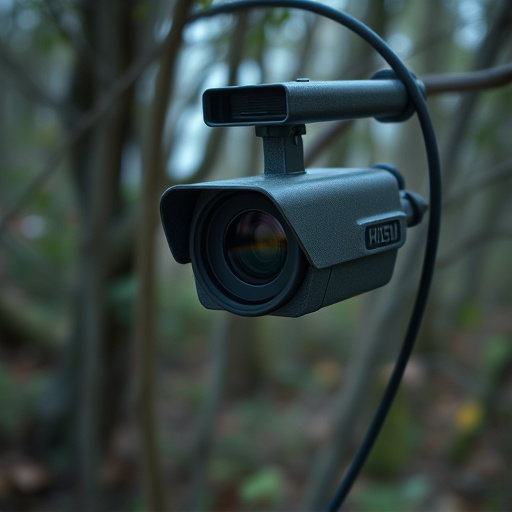Using a Spy Camera With Cloud Storage requires understanding local privacy laws and obtaining consent where necessary. High-risk areas for placement include secure facilities, public spaces with high foot traffic, and places where sensitive information is handled. These cameras enhance security through remote monitoring and data protection while adhering to legal guidelines and data privacy regulations. They are a preferred choice for professionals needing reliable surveillance due to their advanced features and cloud storage capabilities.
Uncover the art of identifying hidden threats with our comprehensive guide on covert recording spot identification. In today’s digital age, understanding legal boundaries and advanced surveillance techniques is paramount. We explore critical aspects like recognizing high-risk areas for spy camera placement and leveraging cloud storage solutions for secure video evidence. Additionally, discover methods to evade detection, ensuring discreet and effective monitoring.
- Understanding Legal Considerations for Covert Recording
- Identifying High-Risk Areas for Spy Camera Placement
- Cloud Storage Solutions for Secure Video Evidence
- Advanced Techniques to Avoid Detection by Cameras
Understanding Legal Considerations for Covert Recording
In many jurisdictions, covert recording, or hidden camera surveillance, is a delicate legal matter. It’s crucial to understand that recording conversations or activities without explicit consent can violate privacy laws and result in serious legal consequences. However, there are exceptions and allowances for certain types of recordings, especially when it comes to protecting oneself or one’s property. For instance, some regions permit covert recording as long as it doesn’t involve electronic eavesdropping and is used for legitimate purposes like preventing or investigating crimes.
When employing a spy camera with cloud storage, it’s essential to ensure compliance with local legislation. These devices can be powerful tools for security and surveillance but must be handled responsibly. Always inform individuals that they are being recorded, obtain necessary permissions, and only record in areas where you have the right to do so. Regularly reviewing and updating your knowledge of privacy laws is a prudent step to avoid legal pitfalls associated with covert recording practices.
Identifying High-Risk Areas for Spy Camera Placement
When identifying high-risk areas for spy camera placement, it’s crucial to consider environments where privacy is already compromised or where unauthorized surveillance could have severe consequences. These typically include secure facilities like banks, government offices, and healthcare institutions. In such places, a single poorly placed device can expose sensitive data and operations. Additionally, public spaces with high foot traffic, like crowded shopping malls or transit hubs, may also be candidates due to the potential for theft or surveillance of personal information.
The use of spy cameras with cloud storage can enhance security in these areas by enabling remote monitoring and evidence preservation. However, it’s essential to follow legal guidelines regarding surveillance to avoid infringing on privacy rights. Proper placement, discretion, and adherence to data protection regulations are key when deploying such devices to ensure effectiveness without crossing ethical boundaries.
Cloud Storage Solutions for Secure Video Evidence
In today’s digital era, the use of spy cameras equipped with cloud storage solutions has become a game-changer for secure video evidence collection. These innovative devices allow for discreet and remote monitoring, ensuring that critical footage is not only captured but also safely stored in virtual vaults. Cloud storage offers unparalleled convenience by enabling easy access to recorded videos from anywhere with an internet connection, making it a top preference for professionals requiring reliable and efficient surveillance systems.
The integration of spy cameras with cloud storage provides enhanced security measures. Footage is encrypted and stored on secure servers, often utilizing advanced encryption protocols to safeguard sensitive data. This ensures that even if physical access to the device is gained, the actual video evidence remains inaccessible without the proper digital keys. Such robust security features make these cloud-based solutions ideal for a wide range of applications, from business surveillance to personal safety measures.
Advanced Techniques to Avoid Detection by Cameras
Staying one step ahead of security cameras has become a crucial skill in today’s surveillance-conscious world. For those aiming to employ covert recording methods, understanding advanced techniques to bypass camera detection is essential. One sophisticated approach involves utilizing Spy Cameras With Cloud Storage, which offer discreet recording capabilities and remote access through cloud connectivity. These devices can be cleverly hidden within everyday objects, making them nearly indistinguishable from their surroundings.
By integrating cloud storage, users can securely store and retrieve footage remotely, ensuring easy access without raising suspicion. Advanced features like low-light performance and motion detection allow for successful recordings in various environments, further enhancing the privacy and security of the process.
In the ever-evolving landscape of surveillance technology, mastering covert recording techniques while adhering to legal boundaries is paramount. This guide has illuminated critical aspects, from navigating legal considerations to identifying high-risk areas and utilizing cloud storage solutions like a spy camera with cloud storage for secure evidence. By understanding advanced methods to avoid detection, professionals can ensure effective and legitimate monitoring. Remember that staying informed about legalities and employing innovative storage and evasion tactics are key to responsible and successful covert recording practices.
